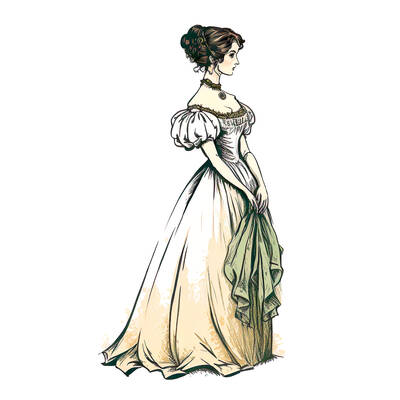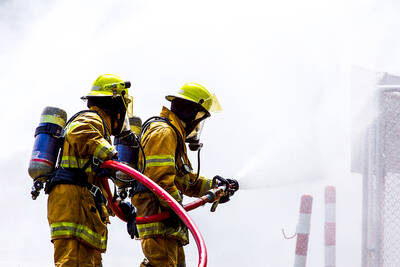The choice of a successor to the Dalai Lama, the spiritual head of Tibetan Buddhists, is a matter of major interest not only for millions of followers of his religion, but also for China, India and the United States, for strategic reasons.
The Nobel peace laureate, who turned 90 on Sunday, is regarded as one of the world’s most influential figures, with a following extending well beyond Buddhism.
HOW WAS HE CHOSEN?

Photo: EPA 照片:歐新社
Tibetan tradition holds that the soul of a senior Buddhist monk is reincarnated after his death.
The 14th Dalai Lama was born as Lhamo Dhondup on July 6, 1935, to a farming family in what is now Qinghai province in the far northwest of China.
He was identified as the reincarnation when he was just two years old by a search party sent by the Tibetan government. They made their decision on the basis of several signs, such as a vision revealed to a senior monk, the Dalai Lama’s Web site says. The searchers were convinced when the toddler identified belongings of the 13th Dalai Lama with the phrase, “It’s mine, it’s mine.”

Photo: AP 照片:美聯社
In February 1940, Lhamo Thondup was officially installed as the spiritual leader of Tibetans in a ceremony at the Potala Palace in Lhasa, now the capital of the Tibet Autonomous Region.
HOW WILL HIS SUCCESSOR BE CHOSEN?
The Dalai Lama has lived in exile in northern India since 1959, after fleeing a failed uprising against the rule of Mao Zedong’s Communists.

Photo: AFP 照片:法新社
In his book “Voice for the Voiceless,” released in March, the Dalai Lama said his successor would be born outside China. He wrote that he would release details about his succession around the time of his 90th birthday.
On Wednesday last week, he ended years of waiting on the issue saying the centuries-old institution of the Dalai Lama would continue and that the Gaden Phodrang Trust had sole authority to recognize his reincarnation.
The Gaden Phodrang Trust is a non-profit organization set up by the Dalai Lama. It supports the Dalai Lama’s spiritual and humanitarian work.
WHAT DOES CHINA SAY?
China says its leaders have the right to approve the Dalai Lama’s successor, and that a selection ritual, in which the names of possible reincarnations are drawn from a golden urn, took place as far back as 1793 during the Qing Dynasty.
On Wednesday last week, hours after the Dalai Lama’s announcement, the Chinese foreign ministry reiterated that China must approve the reincarnation.
But many Tibetans are suspicious of any Chinese role in the selection.
It is inappropriate for Chinese Communists, who reject religion, “to meddle in the system of reincarnation of lamas, let alone that of the Dalai Lama,” the Buddhist leader has said. In his book, he asked Tibetans not to accept “a candidate chosen for political ends by anyone, including those in the People’s Republic of China,” referring to the country by its official name.
Beijing brands the Dalai Lama, who won the Nobel Peace Prize in 1989 for keeping alive the Tibetan cause, as a “separatist” and prohibits displays of his picture or any public show of devotion towards him.
China denies suppressing the rights of the Tibetan people, and says its rule ended serfdom in, and brought prosperity to, a backward region.
In 1995, Beijing appointed Gyaltsen Norbu as the 11th Panchen Lama, the second highest figure in Tibetan Buddhism. The Dalai Lama had earlier announced his own choice — a six-year old boy — but the child was taken away by authorities and disappeared from public view.
WHAT ROLE COULD INDIA AND THE US PLAY?
Apart from the Dalai Lama, India is estimated to be home to more than 100,000 Tibetan Buddhists who are free to study and work there.
Many Indians revere him, and international relations experts say his presence in India gives New Delhi a measure of leverage with rival China.
The United States, which faces rising competition from China for global dominance, has repeatedly said it is committed to advancing the human rights of Tibetans.
US lawmakers have previously said they would not allow China to influence the choice of the Dalai Lama’s successor. Last year, then US president Joe Biden signed a law that presses Beijing to resolve a dispute over Tibet’s demands for greater autonomy.
(Reuters)
達賴喇嘛是藏傳佛教的精神領袖,他的繼任者人選不僅關係到數百萬藏傳佛教信徒的切身利益,而且中國、印度和美國出於戰略考量,也對此十分關注。
這位諾貝爾和平獎得主上週日迎來90歲生日,他被認為是世界上最具影響力的人物之一,其追隨者遠遠超出了佛教界。
現任達賴喇嘛如何被認定?
藏傳佛教傳統認為,高級僧侶圓寂後,其靈魂會轉世。
第十四世達賴喇嘛1935年7月6日出生於中國西北部現今為青海省的農民家庭,本名為拉莫頓珠(又譯「拉木登珠」)。
他在兩歲時,就被西藏政府派出的尋訪團認定是達賴喇嘛的轉世靈童。達賴喇嘛的網站寫道,尋訪團根據多種跡象,例如一位高級喇嘛見到的顯靈異象,而做出最終的決定。當這名幼兒指認十三世達賴喇嘛的物品,說「這是我的,這是我的」,尋訪人員才確信他是轉世靈童。
1940年2月,拉莫頓珠在拉薩(現為西藏自治區首府)布達拉宮舉行的坐床典禮中,正式成為西藏精神領袖。
下一任達賴喇嘛將如何產生?
達賴喇嘛在1959年反抗毛澤東共產黨統治的起義失敗後逃離,自此流亡印度北部。
達賴喇嘛在2025年3月出版的著作《為無聲者發聲》中表示,他的繼任者不會在中國境內出生。他寫道,他將在90歲生日前後公佈繼任的相關細節。
上週三,他為多年來的等待畫下句點,宣布延續數百年來的達賴喇嘛轉世制度,並表示「甘丹頗章信託基金會」是唯一有權認定達賴喇嘛轉世的唯一機構。
甘丹頗章信託基金會是由達賴喇嘛設立的非營利組織,支持達賴喇嘛的宗教及人道主義工作。
中國對此有何評論?
中國表示,其領導人對達賴喇嘛的繼任者有批准的權利,並且早在1793年清朝時期就已舉行「金瓶掣籤」儀式——用抽籤的方式選定轉世靈童。
達賴喇嘛上週三宣布將會轉世,數小時後,中國外交部便重申,轉世靈童必須由中國批准。
但許多藏人對中國在轉世靈童選拔過程中扮演的任何角色表示懷疑。
達賴喇嘛表示,否定任何宗教的中國共產黨「干涉喇嘛轉世制度,何況是達賴喇嘛的轉世制度,是不適當的」。他在書中呼籲藏人不要接受「任何人,包括中華人民共和國出於政治目的而選擇的候選人」。
北京將1989年以維護西藏事業而獲諾貝爾和平獎的達賴喇嘛醜化為「分裂分子」,並禁止展示他的肖像或對他公開表達敬仰。
中國否認壓制西藏人民的權利,並聲稱其統治結束了這落後地區的農奴制,並帶來了繁榮。
1995年,北京任命堅贊諾布為第十一世班禪喇嘛轉世靈童,班禪喇嘛是藏傳佛教地位第二高的宗教領袖。達賴喇嘛之前宣布已選定一位六歲男童,但他被北京當局帶走,從公眾視野中消失。
印度和美國能扮演何角色?
除了達賴喇嘛,印度據估計還有超過10萬名藏傳佛教徒,可以自由在印度上學和工作。
許多印度人崇敬達賴喇嘛,國際關係專家表示,達賴喇嘛在印度的存在為新德里在與競爭對手中國打交道時,提供了一定程度的籌碼。
面對與中國日益激烈的全球主導權之爭,美國一再表示致力於促進西藏人民的人權。
美國議員先前曾表示,他們不會允許中國干涉達賴喇嘛繼任者的選擇。2024年,時任美國總統拜登簽署了一項法律,敦促北京解決因西藏要求更大自治權而引發的爭端。
(台北時報林俐凱編譯)

An automated human washing machine was one of the highlights at the Osaka Kansai Expo, giving visitors a glimpse into the future of personal hygiene technology. As part of the event, 1,000 randomly selected visitors were given the chance to try out this cleansing system. The machine operates as a capsule-like chamber where warm water filled with microscopic bubbles gently washes away dirt. The 15-minute process also includes a drying phase, removing the need for users to dry themselves manually. Equipped with advanced sensors, the device monitors the user’s biological data, such as their pulse, to adjust water temperature and other settings

Britain’s National Gallery announced on Sept. 9 that it will use a whopping £375m (US$510m) in donations to open a new wing that, for the first time, will include modern art. Founded in 1824, the gallery has amassed a centuries-spanning collection of Western paintings by artists from Leonardo da Vinci to J.M.W Turner and Vincent van Gogh — but almost nothing created after the year 1900. The modern era has been left to other galleries, including London’s Tate Modern. That will change when the gallery opens a new wing to be constructed on land beside its Trafalgar Square site that is currently

It is a universally acknowledged truth that Jane Austen, born in 1775, is one of the most beloved English novelists, and that her works still inspire readers today. She is renowned for her novels Pride and Prejudice, Emma, and Sense and Sensibility. Her stories often explore themes of love, marriage, and social status in late 18th-century British society and are written with wit and insight. To honor her legacy, the Jane Austen Festival is held every September in Bath, England. She lived there for several years, and the city is depicted in two of her novels. The festival began in 2001

Firefighters might face an increased risk of developing “glioma,” a type of brain cancer, due to certain chemicals encountered on the job. A recent study analyzed glioma cases and found clear connections between the genetic patterns of affected firefighters and their exposure to these harmful substances. The study found that firefighters exhibited significantly higher levels of specific mutational signatures in their glioma cells compared to individuals in other occupations. These signatures — unique patterns of genetic changes in DNA — help scientists trace the source of mutations. Earlier research has associated these mutations with certain chemicals found in fire